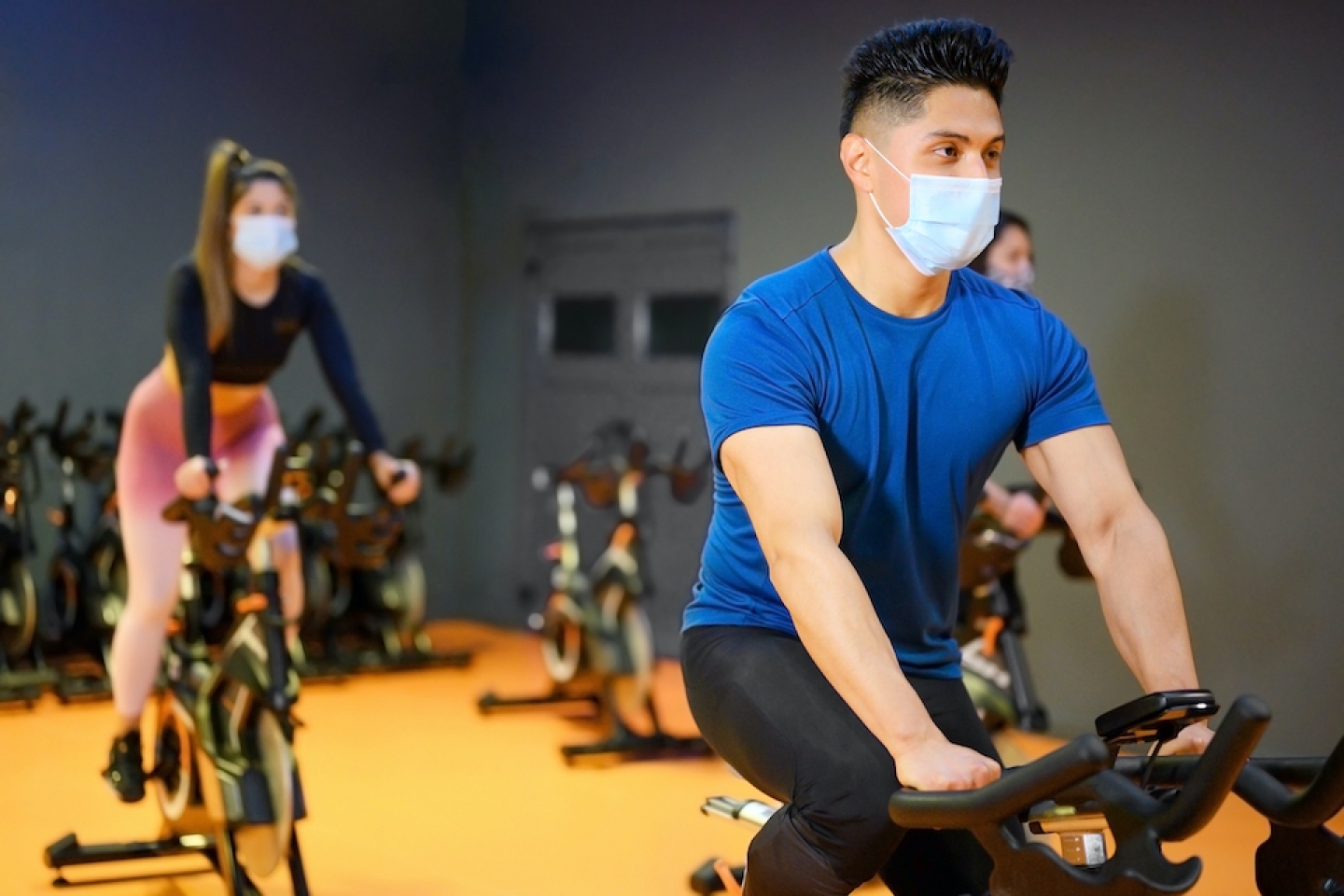
If you quit exercising during the pandemic and are staring at your swimsuit, then you might want to think about resuming--or starting--an exercise routine. Like returning to daily life, however, going back to working out--no matter how fit you were--should happen slowly, says Asad Siddiqi, DO, sports medicine physician and Assistant Professor of Clinical Rehabilitation Medicine. “As we emerge from the past year, recognize that you may not be the same person you were physically, mentally, or spiritually,” Dr. Siddiqi says. “Be kind to yourself.”
If you were a regular exerciser before the pandemic, you might be surprised--and disheartened--at how easy it is to fall out of shape. “Hospital based studies looking at the effects of prolonged bedrest show us that clinically significant deconditioning, loss of strength, and loss of skeletal muscle mass can occur within a week,” Dr. Siddiqi says. Even if the pandemic didn’t confine you to bed, any drastic decline in your physical activity could have produced similar effects.
Fortunately, you can reclaim your fit self. But diving headfirst into your pre-pandemic routine puts you at risk for overuse or overtraining injuries that may prevent you from getting back into shape. “The biggest mistake we are seeing is in people expecting to pick up where they left without ramping up,” he says. “To think that you’re going get back there in a few days of even weeks is to set yourself up for failure and disappointment,” Dr. Siddiqi says. “People who are deliberate and thoughtful about a gradual return to physical activity are the ones who seem to get there quicker.”
For a faster and safer payoff, return to exercise slowly. “Try to avoid comparing yourself to where you were when you stopped exercising. Instead, establish a new baseline and use that as your benchmark,” he says. And, he adds, “Be grateful for the opportunity to be physically active again and be proud of the gains you make day to day.”
The physical and psychological benefits of regular aerobic exercise are well known. In addition to preventing and managing heart and pulmonary disease, diabetes, cancer, blood pressure, weight, depression, and other conditions, it fosters social engagement, which people need now more than ever. “Healthy and happy people make healthy and happy communities,” Dr. Siddiqi says.
Aerobic exercise is any activity that elevates your heartbeat above its resting rate. For most adults, the American College of Sports Medicine (ACSM) recommends at least 150 minutes of moderate intensity aerobic activity, or 75 minutes of high intensity aerobic activity per week. Dr. Siddiqi notes that these are minimum thresholds described for the average ‘healthy’ adult and are only guidelines. “Ideally, you should have a medically-informed conversation with a health and exercise professional who can personalize an exercise program according to your medical and injury history.”
Running, bicycling, and swimming, typical high intensity activities, can be done moderately. “Moderate intensity exercise is any activity performed at an intensity where you can comfortably hold a conversation but might have some difficulty singing a song,” he says.
But aerobic activity is only part of a comprehensive fitness regimen. “Resistance, flexibility, balance, and functional movement training all play important roles in maintaining good health, independence, and a high quality of life, especially as we grow older,” he says. Tai chi, for example, is great for helping elderly individuals preserve balance and avoid potentially devastating falls.”
Starting an exercise regimen, especially if you haven’t previously been physically active, can be overwhelming. Dr. Siddiqi suggests ‘mentally priming’ yourself by dedicating time each day to do something physically active, whether it’s walking, joining a group exercise class, doing calisthenics or chair squats at home. “By scheduling time in your day, you signal to yourself that this is an important undertaking that is worthy of your time and effort.”
Next, think about the kind of the exercise you want to do and its setting. You might prefer the privacy of your home, or a class so you can benefit the motivation of peers or coaches. “Find what works for you and maximize it.”
Finally, set a clearly defined exercise goal that is specific, measurable, attainable, relevant, and time-based to help you gauge your progress and keep you motivated. “These goals should be meaningful to you, and do not need to be related to weight, physical appearance, or clothing size,” Dr. Siddiqi says. “If those are the things that motivate you, those are fine goals to have, but other types of participation goals like achieving a specific number of minutes or doing a specific number of repetitions are just as valid. Know what motivates you, and make sure your goals reflect that motivation.”